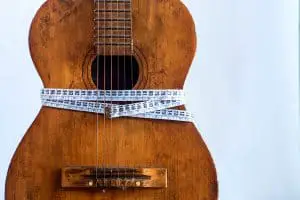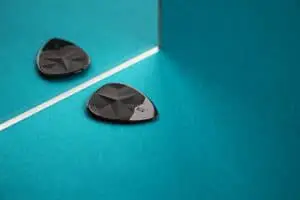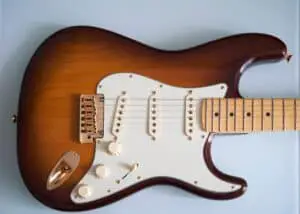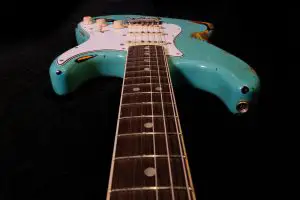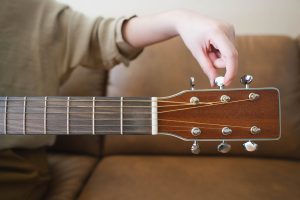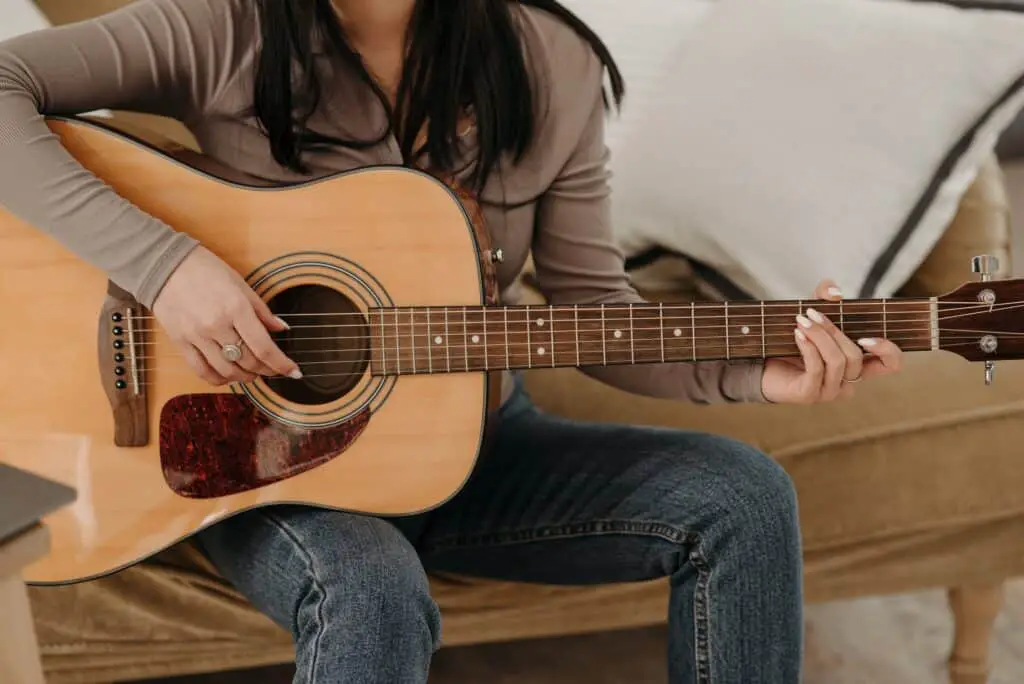
The fingerstyle guitar is playing the guitar with the fingers, fingernails, or fingertips instead of a plectrum. The plectrum is commonly known as a pick, used to strum a guitar. It sounds like a simple yet complex style because it has different genres and styles of music where a fingerstyle guitar is used, ranging from folk music to country music and even blues.
The fingerstyle guitar uses each of the right-hand fingers independently to play different parts of a musical arrangement. It also needs the picking thumb working together to produce the required sound/accompaniment. Compared to other guitar styles, the fingerstyle guitar is sensitive and responsive. They are usually smaller and have a wider fingerboard, making the notes clearer and more balanced.
This article will take you through the different features, advantages, and disadvantages of a fingerstyle guitar.
The Basics Of Fingerstyle
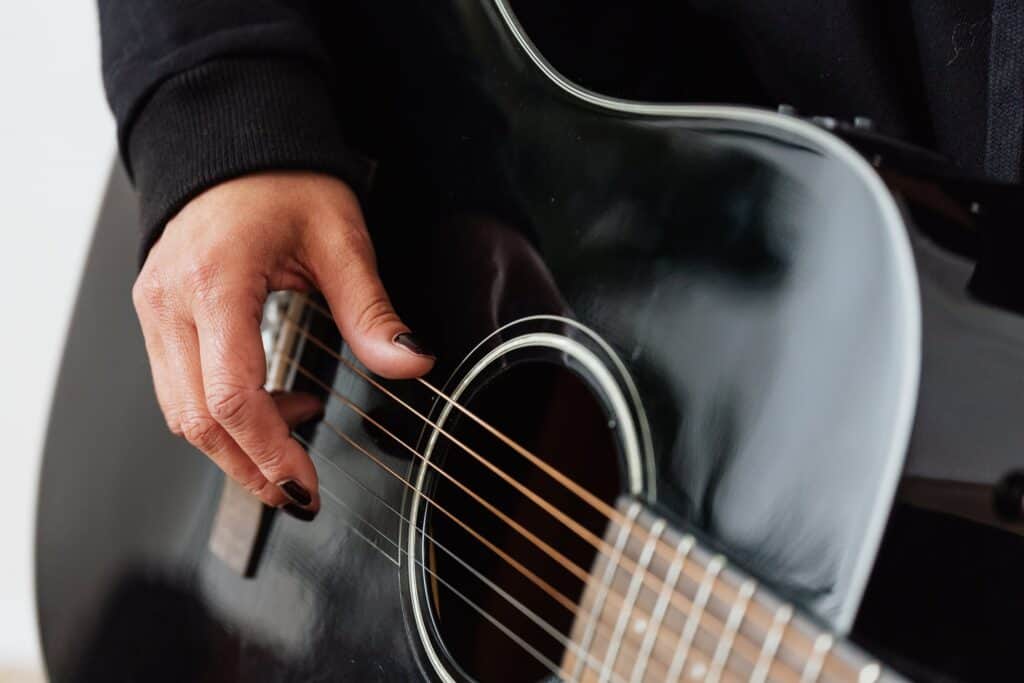
Fingerstyle guitar is generally more complicated than strumming because you are picking individual notes, which requires skill. Still, it gives a whole range of flexibility regarding notes and creativity that are clear and well balanced. The creation of melody, deep bass beautiful notes are a big part of the fingerstyle guitar.
To understand the basics of fingerstyle guitar, you will need to know more about its advantages over other guitar styles.
Advantages Of Fingerstyle
There are many benefits associated with using this style to play the guitar but read on to find out which are the most notable ones.
Harmony
It makes solo rendition of harmony possible, and it can be pretty similar to piano music with the ability to harmonize separate notes and create a beautiful melody.
Control
Its production in terms of melody, texture, and musical dynamics is mainly dependent on the guitarist, which allows for maximum control. Whatever sound you produce with the fingerstyle guitar is based on your ability and intention.
With the fingerstyle guitar, it becomes possible to play two opposite kinds of notes simultaneously and at the same time when needed to create melody and harmony.
Skill
It requires high finger dexterity since the fingers work separately to produce harmonious notes. Fingerstyle guitar requires heavy use of harmonics and focus. Its techniques are considered more complex than other guitar styles.
Creativity
It allows for more creative expressions and interpretations since control is mainly done by the guitarist. It accords you with the opportunity of playing rich, clear, and fuller sounds.
Versatility
You can play multiple similar strings simultaneously, and you can play adjacent strings. That is, a low bass note and a high treble note can be played simultaneously. Slow tempo, as well as a fast one, can also be achieved. There are almost no limitations regarding the fingerstyle guitar except for the guitarist skills, which can be improved with time and practice.
Simplicity
You do not need many tools to be able to produce beautiful sounds. You only need your hands and a guitar to play. You can play it as a single duo and as an accompaniment with several other instruments.
Notes
Since it is natural, the sounds achieved are more prosperous and fuller due to the fingers making the guitar strings vibrate differently from when picks are used, which gives off a different sound.
Muscle memory
The more skilled you are, the better you become at learning new songs. Skills come from regular and repeated practices, which exercise your muscle memory and create an instinctual sense of different music and guitar patterns in play.
Authenticity
Playing guitar with picks gives off an artificial feel compared to playing with your fingernails or tips. You have more control over the sounds, which means that whatever you play is intentional and original without echoes or the delicate plucky notes.
Disadvantages of a Fingerstyle guitar
It is only typical for anything that has advantages to have its disadvantages. In the case of this guitar style, its flaws include:
It Causes Calluses
Some people prefer to use their nails to avoid calluses on their fingers, but this is not full proof as they can break at any time. Since it requires consistent playing to build a skill, fiction is repeated, leading to calluses. However, calluses don’t have any serious repercussions, and there are ways to get rid of them if you are bothered by them.
Softer Notes
This can be a problem, especially when you want to strike a louder chord. Admittedly, the notes sound richer but weaker due to the human touch.
It Requires Rigorous Practice
If you don’t have the skills and focus needed, it is possible that your playing might come off as inconsistent. There is almost no way to hide the notes if you make a mistake, hence, the need for repeated practice. The material of this guitar style is complex compared to other guitar styles. It will take consistency, time, and hard work to be considered a professional.
Conclusion
Fingerstyle guitar is simple in its form and allows for producing a wide range of sounds. It doesn’t matter if you are a left or a right-handed person. You have to focus on the dominant hand to pluck the required notes. Depending on what you want to achieve, you could either use your fingertips or nails to play the notes simultaneously and sometimes at once.
Fingerstyle guitar can suit different genres of music. Such as rock, modern, contemporary, blues, and many more. Learning fingerstyle guitar is not as difficult as you may think, but it requires effort and regular practice like most new skills. Repetition and muscle memory go a long way into making a beginner evolve into a professional. Fingerstyle guitar is a style and not a type of guitar and so acoustic, electric, and bass guitar can be a tool in its implementation.
Frequently Asked Questions
John Fahey invented the fingerstyle in the 19th century. He inspired guitarists such as Leo Kottke and many others to adopt the style.
Yes, it is more complicated than strumming because it requires more skill and picking individual notes.

